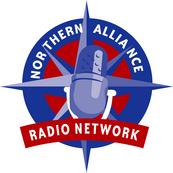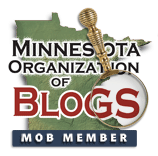Why Balochistan is up in arms
In December 2005-January 2006, the Human Rights Commission of Pakistan conducted a fact-finding mission in Balochistan.
Their report can be found here, in PDF, and runs 60 pages. I found the report linked at the website of the Baloch Society Of North America.
The executive summary encapsulates the tensions behind the conflict that was grown in severity since December.
The report touches on several areas of concern, and present evidence found of abuses in these areas.
Arrests and arbitrary detentions
Extrajudicial killings
Disappearances
Torture
It is in reaction to these activities that the insurgency has grown increasingly violent.
Just this weekend, another pipeline was attacked.
Also, a bridge was destroyed.
The US will be tempted to ask the insurgents to pull back from their attacks before peace can be discussed, but the Baloch people do wonder the US is not doing more to pressure President Musharraf's government to cease the human rights violations described above.
Previous Posts
More unrest in SE Iran
The growing civil war in Baluchistan
Roundup of events in Balochistan
Iran hits back
The Port of Gwadar
Roundup of events in Balochistan
The Government of Balochistan in Exile
The toll in Balochistan
Their report can be found here, in PDF, and runs 60 pages. I found the report linked at the website of the Baloch Society Of North America.
The executive summary encapsulates the tensions behind the conflict that was grown in severity since December.
In both Dera Bugti and the Kohlu area, HRCP received evidence that action by armed forces had led to deaths and injuries among civilians. Populations had also been subjected to indiscriminate bombing.
Many of the victims were women and children. Lists of casualties are included in the report. The dead included some Hindus, many of whom had been forced to leave their homes due to the fighting.
There was also an immense sense of fear prevailing among ordinary people, particularly in Dera Bugti, from where 85 percent of the population had fled. Many of the citizens that the HRCP team members spoke to complained about the heavy deployment of paramilitary forces in the area, use of excessive force by the Frontier Constabulary, a paramilitary force, and harsh behaviour towards the people, including children, by personnel linked to these forces.
The views expressed by ordinary people contradicted the opinions put forward by FC officials, who maintained citizens appreciated their presence in the area. Members of the paramilitary forces and the district administration, while extending cooperation to HRCP, gave detailed accounts of abuses they alleged had been committed by the Baloch tribal leaders. They also blamed fugitives or ?furraris? for much of the unrest in the province. Racism directed towards the Baloch people surfaced quite openly during some of the discussions.
HRCP expressed grave concern over the fact that militants had placed land mines along roads, and appealed to all sides in the conflict to give up violence in favour of a negotiated resolution to the complex issues of the province. It also regretted the death of personnel of the paramilitary forces.
It was however obvious that the people?s perceptions regarding discrimination against them by the federal government, notably an establishment that they saw as being domminated by the Punjab, had played a role in formenting the deep sense of resentment and anger found in the province. These sentiments had significantly contributed to the new conflict. Citizens meeting the HRCP team also expressed the apprehension that the military wished to establish control over the vast natural resources of Balochistan.
The report touches on several areas of concern, and present evidence found of abuses in these areas.
Arrests and arbitrary detentions
The Interior Minister is quoted in the press as acknowledging having made 4,000 arrests in connection with the Balochistan situation, while speaking to the press in Turbat. This matter was later raised by a leader of PML(N).4 . The charges against a number of these persons have not been disclosed to their families. In some cases it is not known where they are being detained, and furthermore the government has not disclosed the identies of persons arrested during these operations.
Extrajudicial killings
On the basis of credible reports it is in a position to conclude that noncombatants have been killed. On more than one occasion, the use of force was disproportionate and excessive and employed indiscriminately. The HRCP team was able to investigate the facts of the bombing and use of force by the security forces on December 17th, 2005.
The government has denied all reports of bombing civilian populations and continues to insist that there is no unusual army action. According to them, it was a ?law and order? situation, created by a handful of miscreants, which was being dealt with. The government?s position cannot be sustained by the evidence made available to HRCP.
Disappearances
HRCP has received reports of disappearances from across the country. The families are often hesitant to come forward because of threats by intelligence agencies warning them to remain silent. For reasons of confidentiality, the HRCP is unable to give details of every such case received by them. We do, however, have a fair number of documented cases which can be made public. They present a dark picture. The reports reflect a pattern of intimidation and abuse; people are threatened to remain silent, they are blindfolded and handcuffed and tortured through various means, including the injection of unknown chemicals, humiliation and stripping.
Torture
Torture is endemic in Pakistan....The HRCP finds the situation extremely alarming and urges the parliamentarians to pay special attention to this very serious human rights violation, which is being committed with impunity. Regrettably, the courts too have failed to take serious notice of torture and accept it as a common reality.
....
HRCP must emphasize that the reports regarding allegations of torture received by them are the tip of the iceberg. Amongst the reports which cannot be reported are those which do not sound credible or are not verified or consistent. In addition to this, a number of victims and their families do not wish to be identified.
It is in reaction to these activities that the insurgency has grown increasingly violent.
Just this weekend, another pipeline was attacked.
Tribal militants fighting for greater autonomy in Pakistan's restive southwestern Baluchistan province blew up a pipeline supplying a major gas distribution plant on Sunday, a senior official said.
The pipeline supplied gas to the plant in the troubled Dera Bugti district from the Loti gas field, Abdul Samad Lasi, administrator of the district, told Reuters.
Also, a bridge was destroyed.
Insurgents reportedly blew up a railway bridge near Kari-Dor in Balochistan on April 22, halting train services from the provincial capital Quetta. “Unidentified people have blown up an old bridge near Kari-Dor damaging 10 feet of the track,” said Irfan Gauhar, the Divisional Railway Superintendent in Multan. He said trains from Quetta to Punjab, the Chiltan Express, Balochistan Express, Jaffar Express and Bolan Mail had stopped at various stations. Two bridges at Sibi-Harani section have been blown up in the last three days and railway installations on this section have been attacked 12 times during the last couple of months, according to Daily Times.
The US will be tempted to ask the insurgents to pull back from their attacks before peace can be discussed, but the Baloch people do wonder the US is not doing more to pressure President Musharraf's government to cease the human rights violations described above.
Previous Posts
More unrest in SE Iran
The growing civil war in Baluchistan
Roundup of events in Balochistan
Iran hits back
The Port of Gwadar
Roundup of events in Balochistan
The Government of Balochistan in Exile
The toll in Balochistan








0 Comments:
Post a Comment
<< Home